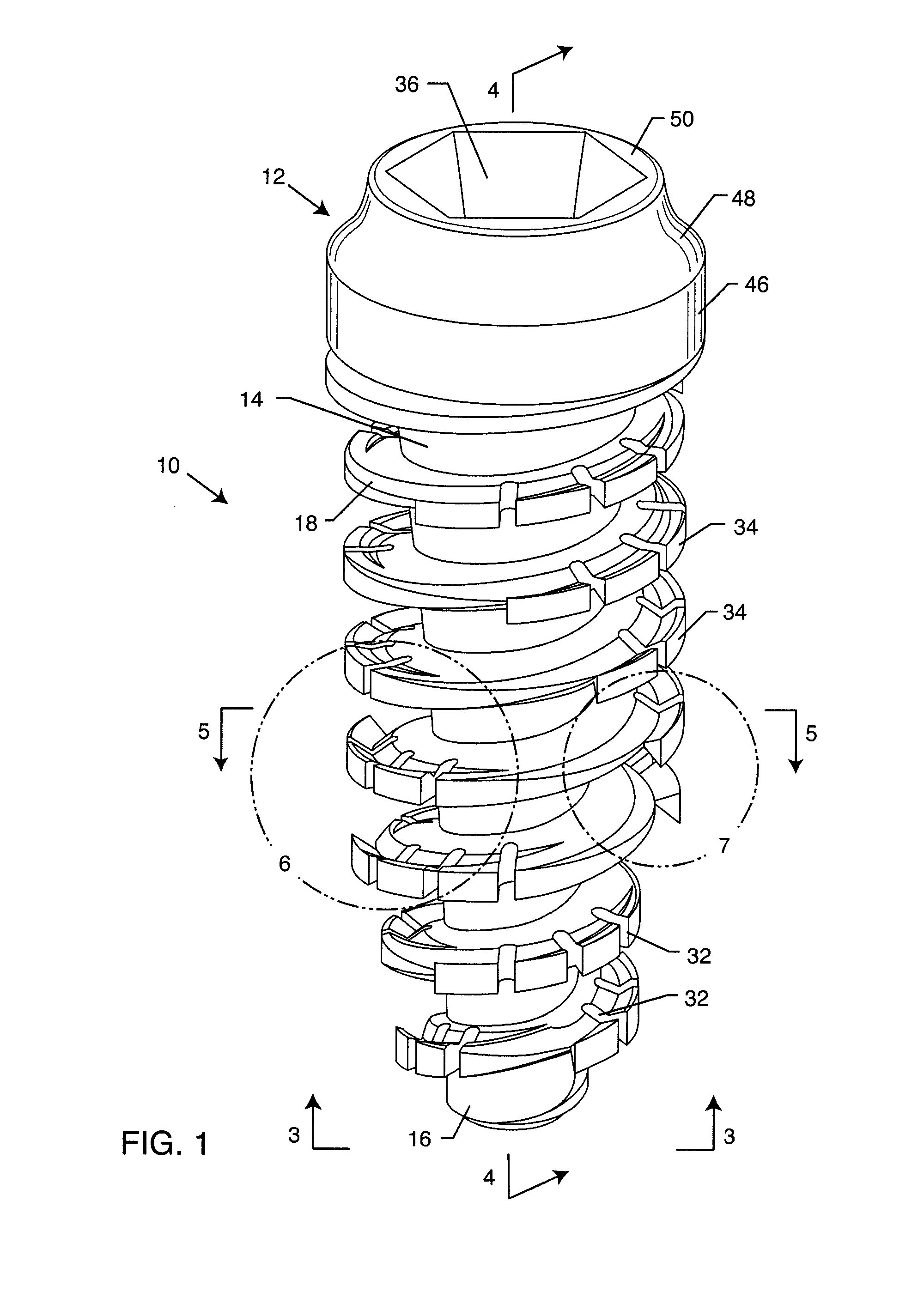This diverse structure of the bones from one part of the body to another and within the same area from cortex (outer layer) to medulla (inner layer), makes the bone an unpredictable material for implants and fasteners.
Inconsistencies in vital
bone structure have resulted in many limitations in the current procedures.
Therefore, while the drilling of the bone does not contribute to post-operative pain, placement of current
bone screws or implants that rely on frictional forces for their stability cause expansion of the recipient bone, resulting in the main source of post-operative pain in orthopedic and
dental implant surgeries.
The limitations and unpredictable bone qualities are many times greater in
dental implant surgery as the implants are placed in place of freshly extracted teeth or teeth that were previously lost, such as due to chronic infections that created voids in the bone.
Creating a perfectly sized and shaped osteotomy is the greatest challenge for the implant dentist.
Taking into consideration the fact that this osteotomy is performed in a physically unpredictable
bone mass in the
oral cavity between tongue and
cheek, in a wet and bloody field with potential operator hand movement and patient movement creates many challenges for successful
implant placement.
Live
human bone is erratically fragile in small thicknesses.
This
fragility particularly complicates osteotomy creation in multi-rooted teeth sockets where thin webs of bone are the only anatomically correct position for the implant.
Although there are commercially available “bone traps” that can be used to trap these shavings by the surgical suction mechanism, there are concerns with harvesting the bone in this manner due to potential bacterial
contamination.
Moreover, due to the nature of the suction mechanism, the trapped bone is repeatedly and cyclically washed and dried in the trap before it is recovered, thereby compromising the
vitality and viability of the removed bone.
The most common cause of implant failure is the lack of
initial stability, which is nothing but the inability and limitations of the
system to create the perfectly sized and shaped osteotomy for the chosen implant and patient.
Inappropriate osteotomy size for a particular site is the most common cause of implant waste at
dental offices that contributes to unnecessary higher cost to the consumers.
If the osteotomy size was overestimated, the primary stability suffers with risk of early mobility and implant loss in one to two weeks.
If the size was underestimated, the primary stability will be excellent, but the excessive pressure at the implant bone interface, either through
ischemic necrosis of the bone layer adjacent to the implant or through enzymatic activity from the pressure, causes the implant to fail in three to four weeks.
Another reason for bone
necrosis and subsequent failure of dental implants is damaging the osteotomy site by overheating it during drilling.
An overused, worn
drill in a hard bone can generate enough heat to damage the bone to the extent that the implant does not integrate.
Needless to say, either way, there is a high per-implant cost in drilling supplies associated with the current systems.
In places where the implant is placed in thin bones, like the septum of a multi-
rooted tooth, the success of current implants is limited due to the high chance of fracture of this septum either by sequential drillings or by the pressure of the implant itself.
Any micro or
macro movement of the
implant surface during this period prevents formation of bone next to its surface and results in failure.
 Login to View More
Login to View More  Login to View More
Login to View More 


